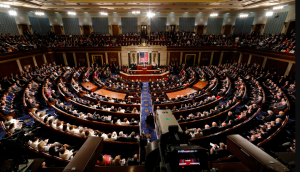By Yuning Xue
On the first day of the Fall 2021 semester at UC Berkeley — Sather Gate, a landmark at the center of the campus, was blocked by a group of nearly 50 protesters [1]. As students begrudgingly took detours to go to class, the group made their message clear, in capital letters written on a banner longer than the width of the gate: “Defend People’s Park”, “UC Land Grab Puts Profit Over People”. The trigger would not have been unfamiliar to most students, who receive emails from Chancellor Carol Christ on UC Berkeley’s plan to rebuild People’s Park — a historic site two blocks from campus that is a symbol of activism and dissent — into primarily student dormitories.
The struggle over the control of People’s Park is almost six-decade long. The issue takes root in the student activism of the 1960s, when students and residents of Berkeley took an idle parking lot from UC Berkeley and turned it into a park. The park has never stopped being controversial, as UC Berkeley kept trying to build student housing on the site — a need reinforced by the dire housing crisis of the Bay Area — while activists resisted to protect the historical symbol as well as the rights of the unhoused people currently living in the park.
UC Berkeley’s current plan, which will build dormitories for students and affordable housing for the poor while partnering with local nonprofits to provide temporary housing for the displaced unhoused people, is a net improvement compared to the status quo. But UC Berkeley can still do better to honor the historical significance of People’s Park by welcoming more input from the community and by sharing with the community control of the park.
The Historical Significance of People’s Park
The powerful symbolic meaning of People’s Park inspires much of the current protest and resistance against UC Berkeley’s housing plans. Understanding the park’s history and its meaning for the Berkeley community is an important step to understand how UC Berkeley can properly commemorate the park, which Chancellor Carol Christ claims to do with the current plan [2]. The original site of People’s Park was a piece of land, formerly under residential use, acquired by the UC under eminent domain in the 1950s. UC Berkeley planned to build student housing and other recreational sports facilities on it, but only found itself lacking the necessary money to do it after having bulldozed the residential buildings on the site. By 1969, the site had become a muddy parking lot with no significant usage. Seeing the idle space, a group of students and residents met and came up with a plan to turn the site into a park, which would become a hub for uncensored cultural and political activities [3]. The initiative, once published in local newspapers and flyers, attracted hundreds of volunteers to the site to plant sod, flowers and trees. In a spirit of optimism and anti-authoritarianism, participants named the project “People’s Park” [4]. The mere existence of People’s Park symbolizes community activism and a brave resistance to authority and capital.
The Housing Crisis and the Need to Demolish the People’s Park
UC Berkeley’s rationale for building on People’s Park is simple: students need more housing. UC Berkeley is only able to provide housing for 22 percent of its students, the lowest percentage in the UC system [5]. The Bay Area, and the state of California at large, is also facing a severe housing crisis. California is among the nation’s worst in providing affordable housing for the poor. Only 24 rental homes are affordable and available per 100 extremely low income households in California [6]. The Bay Area is also among the top 4 metropolitan areas in the nation for housing unaffordability [7]. The situation is even worse for renters, who have to work 2.2 full-time jobs at the minimum wage to afford renting a one-bedroom apartment in the Bay Area [7]. The solution to this housing crisis is, quite simply, to build more houses and make them available to low income households. By building more dormitories, UC Berkeley can contribute to the easing of the housing shortage for students.
However, in this approach to the housing crisis, UC Berkeley is prioritizing housing for students rather than low income households. In an interview Carol Christ, chancellor, said “if we do not address [the housing crisis], it will ultimately compromise the excellence of the campus because it will be harder for us to recruit graduate students and undergraduates to solve the housing problem.” [8] In other words, UC Berkeley is more willing to take an approach of solving the student housing problem first, then help solve the larger housing problem. Although, UC Berkeley is obligated to server its student population, I would suggest UC Berkeley take a more community-based approach, which means considering the interests of people in the larger community and not just students.
The Role of Media
The media has played an instrumental role in encouraging UC Berkeley to expand student housing by making the connection between People’s Park and the larger housing crisis of the area. News reports that feature People’s Park would almost always introduce the current housing crisis and UC Berkeley’s attempt to address it. One NBC News article titled “People’s Park, once a symbol of peace, turns into a battleground in housing wars” exemplifies this approach. Opponents to UC Berkeley’s plan of construction also acknowledge the relevance of the housing crisis. In an editorial by the Daily Californian Editorial Board, the Board urges UC Berkeley to recognize the opposition while acknowledging that “UC Berkeley must resolve its severe housing shortage” [9].
In featuring the opposition, however, the traditional media, including newspapers and news websites such as the Daily Californian and the San Francisco Chronicle, fails to give an
adequate voice to the unhoused people currently living in People’s Park. When news reports depict the opposition, they typically interview former student activists, including the ones who participated in the founding of the park, while lacking coverage for the community service groups currently serving the unhoused people in the park or the unhoused people themselves. Their voices are more likely to be heard on social media, where activists can directly talk to the residents of People’s Park and spread their words through Instagram posts [10]. The lack of coverage of people on “ground-zero” at People’s Park — the unhoused people and their advocates — may serve to over-simplify the opposition into a nostalgia for the past [11].
Building Consensus Through Community Input
The current controversy has presented UC Berkeley with two courses of action: first, to keep the status quo at People’s Park while building student housing elsewhere or second to move forward with the current plan of building student dormitories and affordable housing on People’s Park while housing displaced residents of the park in partnership with local nonprofits. The second option is more preferable to the first, but I propose a third option with community engagement at the core that would be the most desirable.
The status quo option would be favored by People’s Park’s residents and “Defend People’s Park” activists. On the other hand, the City of Berkeley, UC Berkeley’s administration, and the students of UC Berkeley would all oppose leaving People’s Park intact. Berkeley Mayor Jesse Arreguín has made his preference clear in an interview: “I can’t sit back and see more people being priced out of my city, more people experiencing homelessness, and say that the status quo is working. It’s not working.” [12]
Students would also favor development, given the dire need for housing and the long-time stigmatization of the park as a hub for crime. Polls show that most students support UC Berkeley’s plan to develop People’s Park, and the vast majority of students rank “increasing availability of student housing” as the top priority for UC Berkeley. Importantly however, students also care about the displacement of the unhoused people, which is the second most important concern for all students and the most cited reason for opposition to the plan [13]. Overall, students are supportive of the development of People’s Park as long as UC Berkeley takes into account the well-being of the unhoused population.
UC Berkeley is also eager to provide more student housing so it can shake off the accusation that the lack of student housing despite increasing enrollment is crowding out local resources and pushing up rent. People’s Park, in fact, is but one of nine sites where UC Berkeley is planning to build student housing [14]. The project at People’s Park, although not the largest in terms of the number of students housed, will showcase UC Berkeley’s determination to address the housing issue, while also leaving an invaluable political legacy for Chancellor Carol Christ. UC Berkeley, however, still has significant autonomy over the project. Because it has promised not to start construction until all residents of People’s Park have settled in temporary housing, the administration still has the room to modify its plan [2].
Therefore, the status quo is not in the interest of the three most powerful stakeholders: UC Berkeley, the City of Berkeley, and the student body. The second option, which is UC Berkeley’s current plan, appears to be an all-encompassing approach that meets all parties’ interests. UC Berkeley builds “unprecedented” partnerships with local nonprofits, the church, and the City of Berkeley to launch a multi-pronged effort to rebuild the park [15]. The plan’s recruitment of local nonprofits is indeed an approach that resonates to some extent with People’s Park’s founding values, that members of the community, acting collaboratively, can achieve great things together. But I suggest UC Berkeley go one step further in honoring the spirit of People’s Park.
Instead of developing a plan to partner with multiple organizations, UC Berkeley should open up the process of planning to the public. UC Berkeley should welcome community input on how to address the current housing crisis and what to do with People’s Park by inviting students and residents to participate in a design competition. Considering the feasibility of implementation, UC Berkeley could still hold on to part of its plan by, for example, confirming that student dormitories will definitely be built on the park, while leaving out a certain part of the park for community members to design.
This approach would allow the administration to demonstrate that it genuinely understands the historical significance of the park and what it means to the Berkeley community, and most importantly that the commemoration of this historic landmark cannot be the work of UC Berkeley’s administration alone. This will be an important step towards addressing the
opposition’s argument that People’s Park, for its historical sanctity, should remain intact from UC Berkeley forever.
All in all, attempts to change People’s Park cannot be designed with the interests of only one party in mind. Students of UC Berkeley, residents of the City of Berkeley, and the unhoused people residing in the park are all part of the process and should be considered with any development on People’s Park.
References
- Patel, Anishi. Students, Activists Block Sather Gate, Protest People’s Park Development, 25 Aug. 2021, https://www.dailycal.org/2021/08/25/protesters-blockade-sather-gate-in-opposition-to-pe oples-park-development/. Accessed 25 Mar. 2022.
- Christ, Carol. “An Update from Chancellor Christ on Two UC Berkeley Student Housing Projects.” Berkeley News, 22 Feb. 2021, https://news.berkeley.edu/2021/02/22/an-update-from-chancellor-christ-on-two-uc-berkel ey-student-housing-projects/.
- Barmann, Jay. “A Brief History of Berkeley’s People’s Park, Born 50 Years Ago Today.” SFist – San Francisco News, Restaurants, Events, & Sports, 20 Apr. 2019, https://sfist.com/2019/04/20/a-brief-history-of-berkeleys-peoples-park/
- Karlamangla, Soumya. “The Past and Future of People’s Park.” The New York Times, 25 Oct. 2021. NYTimes.com, https://www.nytimes.com/2021/10/25/us/peoples-park-berkeley.html.
- Dineen, J. K. “UC Berkeley’s Housing Crisis Is 50 Years in the Making, and Students Say, ‘We Get Screwed at Every Turn.’” San Francisco Chronicle, 14 Mar. 2022, https://www.sfchronicle.com/eastbay/article/UC-Berkeley-s-housing-crisis-is-50-years-in -the-16996100.php.
- Emmanuel, Dan, et al. The Gap: A Shortage of Affordable Rental Homes. National Low Income Housing Coalition, p. 31.
- Housing Affordability | Vital Signs. https://www.vitalsigns.mtc.ca.gov/housing-affordability
- Dinkelspiel, Frances. “It’s Not Just People’s Park That Will See Housing. UC Berkeley Chancellor Vows to Build 7,500 Beds in 10 Years.” Berkeleyside, 11 May 2018, https://www.berkeleyside.org/2018/05/11/its-not-just-peoples-park-that-will-see-housing uc-berkeley-chancellor-vows-to-build-7500-beds-in-10-years.
- Hom, Emily. “UC Berkeley Must Accurately Portray Its Relationship with People’s Park.” The Daily Californian, 10 Oct. 2021, https://www.dailycal.org/2021/10/10/uc-berkeley-must-accurately-portray-its-relationship -with-peoples-park/.
- People’s Park (@peoplesparkberkeley). Carol Christ and Peter Radu’s “Encampment Resolution” Is NOT Acceptable to the Long Term Unhoused Residents of People’s Park. https://www.instagram.com/p/Cbibn4PAieI/ Accessed 25 Mar. 2022.
- Scheier, Rachel. “People’s Park, Once a Symbol of Peace, Turns into a Battleground in Housing Wars.” NBC News, https://www.nbcnews.com/news/us-news/peoples-park-symbol-peace-turns-battleground housing-wars-rcna19998. Accessed 24 Mar. 2022.
- Winck, Ben. “Meet the Millennial Mayor of Berkeley, Who Changed His Mind on the Housing Crisis. ‘I Can’t Sit Back and See More People Being Priced out of My City.’” Business Insider, https://www.businessinsider.com/housing-market-crisis-jesse-arreguin-mayor-berkeley-re sidential-zoning-homes-2021-9. Accessed 24 Mar. 2022.
- “Community Support and Public Engagement for People’s Park Housing.” People’s Park Housing, 3 Aug. 2021, https://peoplesparkhousing.berkeley.edu/community-support.
- Dirda, Michael Emerson. “UC Identifies 9 Potential Sites for Student Housing in Berkeley.” Berkeleyside, 31 Jan. 2017, https://www.berkeleyside.org/2017/01/31/uc-identifies-9-potential-sites-student-housing berkeley.
15. Kell, Gretchen. “Campus, City Form Model Alliances to Aid Unhoused People in People’s Park.” Berkeley News, 9 Mar. 2022, https://news.berkeley.edu/2022/03/09/peoples-park-press-conference-coverage/.





Be First to Comment